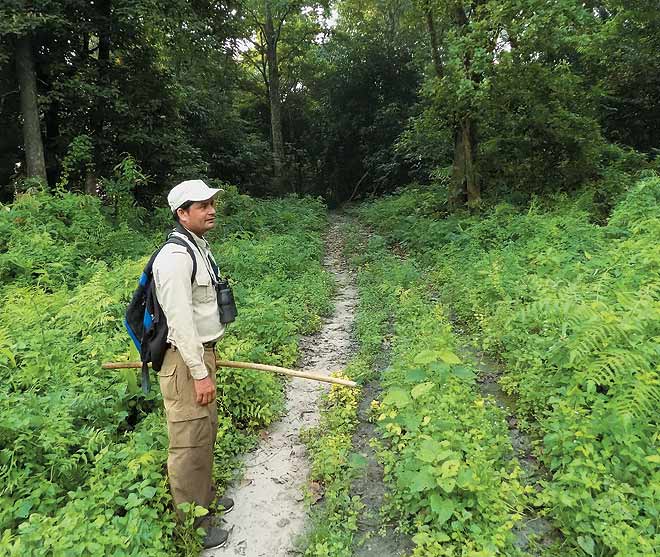OT: How did you get interested in becoming a naturalist?
Krishna Prasad Poudel: I’m from the
OT: What was the training like?
Krishna Prasad Poudel: It was quite impressive. Every morning I had to go with a guest as an assistant naturalist, and I had to remember all the information about every creature in the jungle. I remember the first bird I learnt to identify—it was a red vented bulbul. The resort was near a huge sal forest, and every morning I would wake up to birdcalls, and I would spend some time every morning just watching them.
OT: Is birding your main passion?
Krishna Prasad Poudel: Oh yes, certainly. I loved working with these bird watching groups that would come to Machan. These would mostly be from England, and they would first visit the parks in India and then come to Nepal, especially to Chitwan. They would stay for up to 6 nights at Machan, and every day I’d accompany them on day-long birding tours. They were crazy about identifying as many birds as possible. It was great fun for me, as I would try to show them as many different species as I could. After all the years in the field, I knew where to locate the rarest birds, like the red-headed trogan, the greater hornbill or the sultan tit, the ones that you could spot only in the absolute core areas of the park, up in the Shivalik hills. I gained a kind of local fame for being able to spot them regularly.
OT: How do you track animals in the wild?
Krishna Prasad Poudel: After a while, you instinctively start looking for tell-tale clues. First you see how fresh the marks are, which gives you a rough idea of where the animals would be. Then you’re alert to their smell, what the environment looks like. For example, the easiest way to know that there’s a tiger nearby is from the warning calls of deer and monkeys. All the birds will gather into tight flocks and make a lot of noise. However, there have been many times when I’ve suddenly come face to face with an animal. I’ve encountered rhinos many times. Once there was a mother and her cub. I didn’t see the cub at first as it was in the bush. So we stumbled across the cub, and immediately the mother tried to attack us, to defend her cub. I told my colleagues to run away and jumped up on a low-hanging branch to avoid the charge. Then I started screaming, making as much noise as I could. The mother backed off a little. Then I jumped down and, while screaming, I started beating on the ground with my stick. Then the rhino retreated further. Then I turned and ran.
OT: In all these years, what has been your most favourite wildlife experience?
Krishna Prasad Poudel: I was accompanying some German tourists who really wanted to see a tiger. I was under a lot of pressure to show them at least one. So we’d gone on a jeep safari, when I heard the tell-tale monkey commotion. Instructing the guests to stay in the jeep, I went to look. When I saw some deer running away, I went in the direction they were fleeing from and saw the tiger in an open grassland area. It was winter, and the tiger was basically there for a sunbath. I called the guests down from the jeep and we observed the tiger for a good five minutes.


